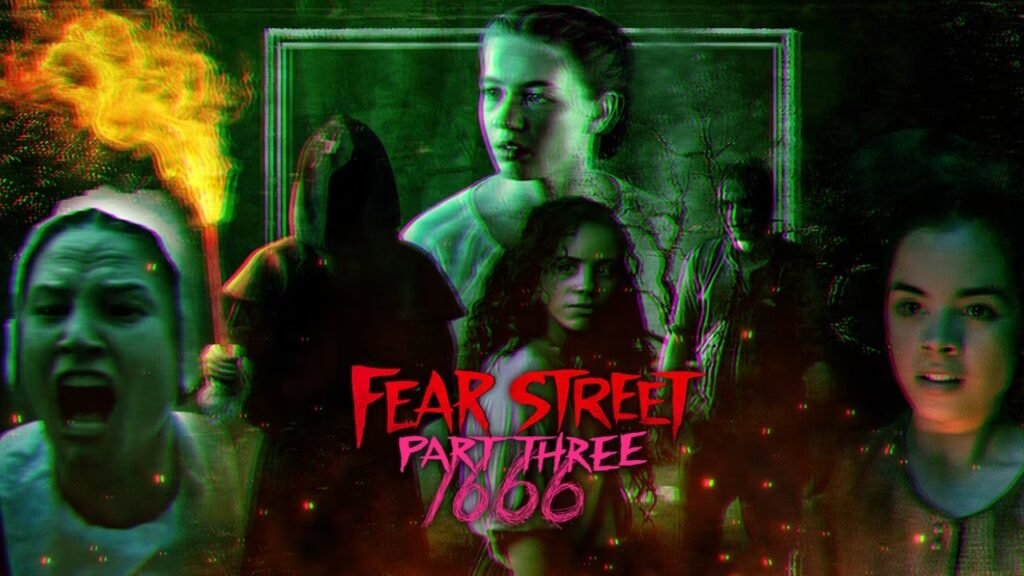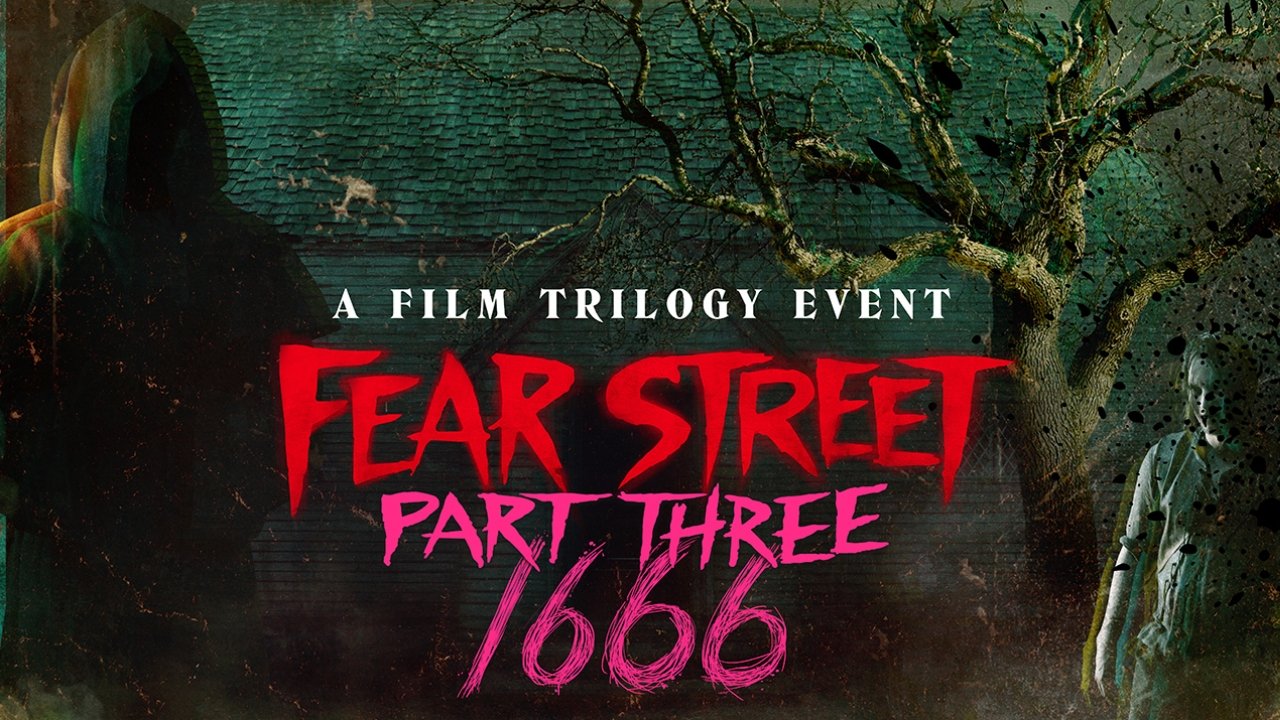“Fear Street Part Three: 1666” takes the viewer back to the roots of the cursed town of Shadyside, diving deep into its horrifying past. Following the success of the first two parts, this conclusion marks the end of a gripping trilogy, leaving fans both satisfied and terrified. With its clever blend of historical horror and supernatural thriller, the final installment delivers everything audiences have come to expect and more. But how does it compare to the first two films, and does it stick the landing as an unforgettable conclusion? In this comprehensive review, we’ll explore the ins and outs of “Fear Street Part Three: 1666,” and why it deserves a place in horror history.
The Plot: A Time-Bending Horror Experience
“Fear Street Part Three: 1666“ transports us to the 17th century, where we finally uncover the origin of the evil that has plagued Shadyside for centuries. After the shocking events of the second movie, we follow Deena, who is once again transported to the past, this time inhabiting the body of Sarah Fier, the witch believed to have cursed the town. The plot unfolds as we learn how Sarah’s tragic fate ties into the town’s dark history, setting the stage for the present-day events in the previous two movies.
The movie shifts between 1666 and present-day Shadyside, and the seamless transitions between timelines are part of what makes this movie so effective. As Deena unravels Sarah Fier’s story, the connection to the current curse becomes clear. The town’s tragic past offers an emotional layer to the horror, giving “Fear Street Part Three: 1666” more depth than typical slasher flicks.
Expert Opinion: The Importance of Historical Context in Horror
Dr. Sarah Conner, a renowned horror film scholar, offers her perspective on why the historical angle of “Fear Street Part Three: 1666” is so powerful. “By tying the supernatural horrors of Shadyside to a real historical period, the movie adds a layer of realism that resonates deeply with the audience,” she explains. “It’s not just about the scares; it’s about the emotional and societal trauma that can span centuries, creating a long-lasting sense of fear that can’t easily be escaped.”
The Characters: More Than Just Victims
While the film may be set in 1666, it doesn’t forget its roots in the modern-day story. The film cleverly brings back characters like Deena and her brother Josh, but they’re now reimagined as their 17th-century counterparts, giving fans a fresh take on their favorite characters. This twist also enhances the emotional depth, as the audience can draw connections between the tragic events of the past and the fate of the current characters.
The standout performance comes from Kiana Madeira, who plays both Deena in the present and Sarah Fier in the past. Her portrayal of Sarah Fier, in particular, is hauntingly believable, and her emotional range brings the character to life in a way that elevates the film beyond just a typical horror movie.
The Depth of Shadyside’s Legacy

One of the more intriguing aspects of the film is the way it presents Shadyside’s curse as a product of historical oppression. The witch trials that lead to Sarah Fier’s death are portrayed as a direct result of a society that fears what it doesn’t understand. This social commentary gives “Fear Street Part Three: 1666” an added layer of depth that distinguishes it from other horror films that rely solely on jump scares.
The curse that haunts Shadyside isn’t just about supernatural forces; it’s about how history, trauma, and prejudice have a long-lasting impact on generations. This makes the film feel relevant in a way that transcends its genre, offering a more complex narrative than many of its contemporaries.
The Horror Elements: Jump Scares and Psychological Terror
While the social themes provide an emotional backbone, “Fear Street Part Three: 1666” doesn’t skimp on the horror. The film masterfully blends the classic slasher elements with psychological terror, keeping the audience on the edge of their seats.
The film uses effective pacing to build tension, gradually escalating the fear factor until the terrifying climax. Whether it’s the eerie ambiance of 1666 or the grotesque creatures that stalk the characters, the horror in this movie feels real and visceral. The period setting also enhances the horror, as the lack of modern technology and resources makes the characters even more vulnerable to the lurking dangers.
For fans of supernatural horror, the movie does not disappoint. The culmination of the witch curse reveals new details about Shadyside’s horrific history, bringing the trilogy to a satisfying conclusion. The way the supernatural elements tie into the character’s fates creates an emotionally charged climax that resonates long after the movie ends.
The Cinematography: A Feast for the Eyes
The cinematography in “Fear Street Part Three: 1666” is exceptional, with the filmmakers paying great attention to detail to create an atmosphere that feels authentic to the 17th century while still maintaining the aesthetic of the previous films. The muted color palette and dimly lit scenes perfectly capture the eerie, foreboding atmosphere of the time period, making it easy to get lost in the world of Shadyside.
The director, Leigh Janiak, has a clear vision for how she wants the story to unfold, and the visuals complement that vision beautifully. The horror isn’t just in the creatures that appear on screen, but in the quiet, tense moments that slowly build up to the next terrifying sequence.
Fear Street Part Three: 1666 – A Satisfying Conclusion
In the end, “Fear Street Part Three: 1666” wraps up the trilogy with both a literal and figurative bang. The final act brings together the themes of the previous films while tying up loose ends that have been building since the first movie. The film gives us closure for the characters, the curse, and the town of Shadyside itself.
What sets this conclusion apart from others in the horror genre is how it balances the supernatural elements with emotional depth. The film doesn’t just want to scare you—it wants to make you feel something. It leaves a lasting impact, making it a standout in the “Fear Street” series.
Final Thoughts: Why “Fear Street Part Three: 1666” Is a Must-Watch
“Fear Street Part Three: 1666” is a remarkable conclusion to an already exceptional trilogy. By blending the rich history of Shadyside with psychological horror, it crafts a film that is both thrilling and meaningful. The performances, especially by Kiana Madeira, elevate the film, while the social themes give it an emotional depth that is often lacking in typical slasher films. If you haven’t already, make sure to check out the final installment of “Fear Street”—it’s an unforgettable ride that horror fans won’t want to miss.
Conclusion:
To sum it up, “Fear Street Part Three: 1666” brings the trilogy to an incredible close, wrapping up the mystery of Shadyside and its cursed past. The emotional weight, historical context, and thrilling horror elements come together in a way that makes this film stand out in the genre. Whether you’re a fan of supernatural horror or just looking for a film with a gripping story, this is a movie you won’t want to miss.
you may also like
Swat Exiles: David Lim & Shemar Moore’s Explosive Chemistry Elevates the Show

